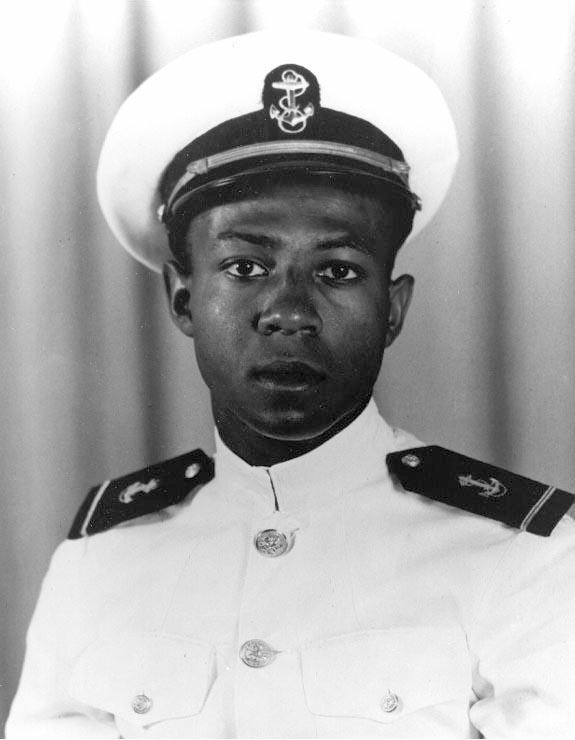Jesse L. Brown’s life, a tale of courage and determination, is a testament to the power of dreams and the human spirit’s resilience. His story is a chronicle of triumph over adversity and prejudice, of ambition nurtured in the face of overwhelming odds. Brown’s untimely demise leaves an indelible mark on American history, raising the question: how did Jesse Brown die?
The Early Years: The Birth of a Dream
Born on October 13, 1926, Jesse Leroy Brown hailed from Hattiesburg, Mississippi. His parents, John, a warehouse worker turned sharecropper, and Julia, a schoolteacher, had six children. Jesse’s childhood home lacked many basic amenities, such as electricity and running water. Yet it was here that a dream took root. Jesse aspired to become a pilot, inspired by the airplanes he saw flying over the cotton fields.
Despite financial constraints and societal prejudices, Jesse was a stellar student and an accomplished athlete. His academic proficiency and athletic prowess earned him the salutatorian spot when he graduated from Eureka High School in 1944.
Breaking Barriers: The First African-American Naval Aviator
Rather than attending an all-black college as his high school principal suggested, Jesse chose the path less taken. He enrolled at Ohio State University, a predominantly white institution, to study architectural engineering. Here, Jesse faced both financial difficulties and racial prejudices. However, his determination to fly remained unwavered.
In 1946, Jesse enlisted in the United States Navy’s V-5 Aviation Cadet Training Program. Despite facing resistance due to his ethnicity, Jesse persevered. His persistence paid off when he was admitted to the program and went on to become the U.S. Navy’s first African-American aviator.
Serving with Honor: Jesse Brown in the Navy
After earning his Naval Aviator Badge, Jesse’s achievement was widely publicized. A feature article by the Associated Press and a photograph of him in Life Magazine heralded his success. Jesse had successfully broken the color barrier in naval aviation.
In 1949, he was commissioned as an Ensign in the U.S. Navy and assigned to the USS Leyte. Despite the ongoing racial prejudices, Jesse gained the respect of his shipmates and crew. His skill as a pilot and his personal integrity earned him the position of an effective section leader within his squadron.
Courage Under Fire: Jesse Brown in the Korean War
In 1950, the Korean War broke out. Jesse’s ship, the USS Leyte, was dispatched off the Korean coast. Over the next few months, Jesse flew 20 combat missions over North Korea with his fighter squadron, providing close air support to U.S. forces on the ground.
On December 4, 1950, USS Jesse L Brown embarked on what would be his final mission. As part of a squad of six F4U-4 Corsairs, Jesse provided air cover to U.S. Marines trapped by North Korean and Chinese forces in the Chosin Reservoir area in northeast North Korea.
A Hero’s Fall: The Final Flight of Jesse Brown
During the mission, Jesse’s plane was hit by enemy ground fire, causing his plane to leak fuel. The damage was significant, and Jesse was forced to crash-land his plane on a snow-covered North Korean mountainside.
Despite the severe impact, the Black Naval officer survived the crash. However, he was trapped inside the wreckage of his plane. His wingman, Lieutenant Hudner, witnessed Jesse’s struggle and made the daring decision to crash-land his own plane to attempt a rescue.
Sadly, Tom Hudner was not able to save his friend.
A Race Against Time: The Rescue Attempt
Hudner braved the freezing temperatures, enemy-controlled territory, and imminent danger to reach his friend. Despite his efforts, Hudner was unable to free Jesse from the wreckage. As the fire from the crash intensified and night fell, Hudner had to make the heartbreaking decision to leave Jesse behind.
A Farewell to a Hero: Remembering Jesse Brown
News of Jesse’s death sent shockwaves through the ranks of his comrades and across the nation. Jesse Brown, the first African-American naval aviator, had become the first black U.S. naval officer to die in the Korean War.
Despite the tragic circumstances surrounding his death, Jesse’s legacy lived on. His courage and determination to overcome racial barriers inspired countless others to follow their dreams, regardless of the obstacles they faced.
Honoring a Legacy: A Warrior’s Tribute
In recognition of his bravery, USS Jesse L Brown posthumously received the Distinguished Flying Cross, the Air Medal, and the Purple Heart. His friend, Thomas J Hudner Jr , was awarded the Medal of Honor for his valiant attempt to save Jesse.
In 1973, a frigate was christened the USS Jesse L. Brown (DE/FF 1089), marking the first time a U.S. Naval vessel was named for a Black American. The Jesse L. Brown ship serves as a lasting tribute to a man who broke barriers, defied odds, and left an indelible mark on American history.
Jesse Brown’s Legacy: An Inspiration for All
Despite his untimely death, Jesse L Brown’s legacy continues to inspire and resonate. His story is a testament to the power of perseverance, determination, and dreams. It serves as a reminder of the sacrifices made by those who have served and continue to serve our country.
The question of how did Jesse Brown die is a poignant one, but it is his life and legacy that truly define him. Jesse’s story is a reminder that, regardless of the odds, one can indeed soar above the clouds. His life and legacy continue to inspire, reminding us of the power of dreams and the indomitable spirit of the human will.
Jesse Brown’s legacy lives on, not just in the annals of military history, but in the hearts and minds of those inspired by his courage and determination. His story is a testament to the power of dreams, the resilience of the human spirit, and the profound impact one individual can have on the world.
The United States Navy awarded him Ensign Jesse Brown for his bravery.






